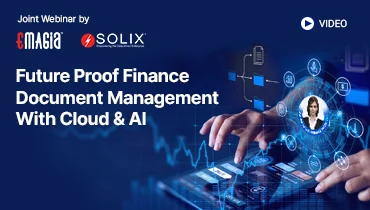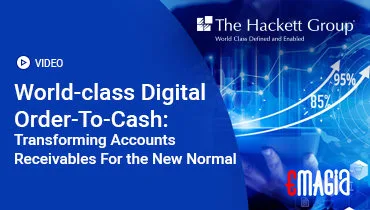Managing Expenses well separates thriving businesses from those that struggle. Whether you run a small firm or manage finance for a growing company, understanding how costs behave and how to measure, control and reduce them is essential to protect margins and cash flow. This guide walks through real-world examples, practical steps, tools, and policies you can use right away to get expenses under control.
Overview: Why Expenses Matter
Costs are not just numbers on a spreadsheet: they determine profitability, cash runway and strategic options. Your ability to manage costs affects pricing, investment capacity and even access to finance.
This guide covers everything from operational details to strategic cost choices, with a focus on practical implementation and measurable results.
Key Concepts and Definitions
What we mean by expenses
In business accounting, an expense is an outflow of cash or other assets incurred in the process of generating revenue. Expenses reduce net income and ultimately cash if not managed well.
Primary financial categories to know
- Business expenses: the broad category including everything spent in running the company.
- Operating expenses: recurring costs required to run day-to-day activities.
- Capital expenses (CapEx): long-term investments capitalised on the balance sheet and depreciated over time.
- Payroll expenses: wages, benefits, payroll taxes and employer contributions.
- Financial expenses such as interest and bank fees.
Why classifying costs correctly matters
Correct classification affects tax treatment, performance metrics and cashflow planning. Mistaking CapEx for operating expense (or vice versa) can distort profitability metrics and mislead stakeholders.
Expense Patterns: Fixed, Variable and Periodic
Fixed expenses explained
Fixed expenses are those that typically do not change with volume in the short term: rent, leased equipment payments, insurances and some salaries. They create the baseline of financial obligations.
Variable expenses and how they move with activity
Variable expenses scale with production or sales — raw materials, shipping, commissions, and transactional bank fees. Managing them often delivers immediate margin improvements as volume changes.
Periodic expenses and planning for infrequent costs
Periodic expenses such as annual software renewals, insurance premiums, or regulatory filing fees occur irregularly and should be budgeted into cash forecasts so they do not create surprise shortfalls.
Expense Tracking and Reporting — Foundation of Control
Why you need disciplined expense tracking
If you can’t measure something you can’t improve it. Regular, accurate tracking is the first step toward smarter decisions around spending and investments.
Essential elements of a tracking system
- Timely capture of invoices and receipts
- Consistent chart of accounts and categories
- Automated bank and card feeds
- Integration with payroll and procurement systems
Expense tracking and reporting in practice
Daily or weekly dashboards that show spend by category, vendor, project and department reveal trends before they become problems. Monthly reports should tie actuals to budgets and forecast variances.
KPIs you should watch
- Monthly burn rate (total expenses per month)
- Payroll as a percentage of revenue
- Recurring operational costs vs non-recurring
- Bank fees and credit card fees as percent of transactions
- Expense variance to budget
Expense Budgeting — Planning to Control
What makes a good expense budget?
A robust budget reflects realistic revenue forecasts, distinguishes fixed from variable costs and includes contingencies for periodic expenses. It should be granular enough to hold managers accountable but not so detailed that it becomes a burden.
Budgeting cadence and ownership
Set an annual budget with monthly re-forecasts. Assign ownership for each major category — finance sets policy, department heads manage day-to-day adherence.
Scenario-based expense budgeting
Build stress-test scenarios (best case, base case, and downside) so you can rapidly adjust spending if revenue deviates. For example, a 10% revenue shortfall should trigger pre-defined expense actions.
Expense Management Systems and Automation
Why automation matters
Manual expense processes are slow, error-prone and costly. Automated systems speed invoice capture, enforce policy, and reduce reconciliation time.
Features to prioritise in software
- Optical character recognition (OCR) for receipt capture
- Automated approval workflows and policy enforcement
- Integration with ERP, payroll and bank feeds
- Role-based access and audit trails for control
- Real-time dashboards for expense tracking and reporting
Real-world impact: an example
A mid-sized services firm implemented expense automation and reduced month-end close time by 40%, cut error-related disputes by half, and freed three full-time staff to work on analytics rather than data entry.
Expense Reduction Strategies — Practical Tactics
Start with the low-hanging fruit
Before negotiating complex contracts, identify quick wins: duplicate subscriptions, underused software, unnecessary bank account fees, and inefficient travel policies.
Ten immediate expense reduction actions
- Cancel unused software licences
- Consolidate bank accounts to reduce fees
- Enforce digital-only receipt submissions
- Negotiate supplier discounts for early payment
- Review and reduce recurring subscriptions
- Use volume purchasing for common supplies
- Limit cellular or travel allowances to reasonable tiers
- Introduce mandatory purchase approvals for higher thresholds
- Automate petty cash and reduce cash handling
- Offer voluntary shift to electronic payments to reduce card fees
Strategic vendor negotiations
Renegotiating fixed contracts — rent, telecom, or managed services — often yields material savings. Prepare by benchmarking market rates and demonstrating multi-year commitment in exchange for price concessions.
Optimize payroll expenses intelligently
Payroll is often the largest line item. Consider cross-training, performance-based incentives and outsourcing non-core roles as ways to reduce fixed payroll cost without harming capability.
Small Business Expenses — Practical Guidance
Unique constraints for small firms
Small businesses typically have tighter cash flow and fewer resources for sophisticated systems. Prioritise simple, high-impact controls that protect runway and support growth.
Essential practices for small teams
- Create a simple monthly budget and cash forecast
- Track monthly business expenses weekly to spot anomalies
- Use inexpensive or freemium tools for invoicing and payments
- Standardise payment terms and require purchase orders
Example: a retailer trims costs
A local retailer audited monthly subscriptions and vendor charges and eliminated $2,000/month in redundant services. They used the savings to fund a modest marketing trial that increased sales 8% in three months.
Managing Capital Expenses (CapEx)
Understanding CapEx vs OpEx trade-offs
Capital investments require upfront cash but can lower operating costs over time (for example, replacing old equipment with a more energy-efficient model). Evaluate on Net Present Value (NPV) and payback.
CapEx decision checklist
- Estimate total cost of ownership (purchase, installation, maintenance)
- Forecast impact on operating costs
- Consider tax and depreciation implications
- Assess financing options and interest costs
- Run sensitivity analysis on key assumptions
Financing CapEx smartly
Leasing, equipment loans or partial vendor financing can smooth cash flow while still enabling essential upgrades.
Expense Governance, Policy and Audits
Why an expense policy matters
A clear expense policy sets boundaries for acceptable spending, specifies approval limits, and defines reimbursement timelines. It reduces ambiguity and supports consistent decisions.
Core elements of an expense policy
- Who can approve what amount
- Which expense categories require receipts
- Allowed travel classes, per diems and hospitality rules
- Consequences for non-compliance
- Process for exceptions
Running periodic expense audits
Regular audits detect duplicate payments, policy breaches and process bottlenecks. Audits also provide assurance to investors and lenders about control quality.
Audit focus areas
- High-value transactions and one-off payments
- Expense patterns by employee and vendor
- Unapplied or stale payments
- Compliance with tax-deductible criteria
Bank Fees and Financial Expenses — Often Overlooked
Small charges add up
Bank fees, foreign exchange spreads and merchant card fees often compound and degrade margins. Regular review and negotiation with your banking partners can lower these recurring costs.
Common bank fee reduction tactics
- Consolidate balances to qualify for fee waivers
- Use fewer but higher-volume accounts
- Negotiate merchant rates based on volume
- Consider payment routing or batching to reduce transaction fees
Expense Tracking for Reporting and Decision-Making
Dashboards that drive decisions
A well-designed expense dashboard answers three questions quickly: where are we spending, how is it trending, and which items should be acted on now.
Essential dashboard widgets
- Spend by category vs budget
- Top vendors and top expense lines
- Monthly run rate and trailing 12 months trend
- Open approvals and overdue invoices
Using analytics to forecast and optimise
Forecasting models can predict next quarter’s expenses using seasonality, contract schedules and growth assumptions — enabling proactive budget adjustments.
Expense Reduction in Action — Case Studies & Examples
Manufacturing firm reduces energy and waste
A mid-sized manufacturer implemented energy-efficient machinery and waste-reduction procedures. The combination reduced utility costs by 18% and lowered variable production costs, improving gross margin by 2 percentage points.
Software company cuts SaaS sprawl
A SaaS company discovered dozens of duplicate subscription tools across teams. Centralising procurement and enforcing approval saved over $150,000 annually.
Expense Risk Management
Identifying expense-related risks
Risks include reliance on a single supplier, fixed lease exposure in shrinking markets, or escalating payroll costs without corresponding revenue.
Mitigation strategies
- Supplier diversification
- Flexible contract terms
- Contingency cash reserves
- Scenario planning and stress testing
Practical Roadmap to Reduce Expenses Over 12 Months
Month 0–3: Assessment and quick wins
- Establish baseline dashboards for all major expense categories
- Identify and cancel redundant subscriptions
- Negotiate immediate vendor discounts
Month 4–6: Process automation and policy enforcement
- Implement or upgrade expense management software
- Roll out standardised approval workflows
- Train managers on budget ownership
Month 7–12: Strategic supplier negotiations and CapEx review
-
- Revisit lease and long-term contracts
- Run CapEx prioritisation vs ROI
- Establish continuous improvement cycle for expense analytics
How Emagia Enables Better Expense Outcomes
Emagia provides a unified platform that helps finance teams transform expense control from reactive to strategic. The solution focuses on automation, insight and governance so organisations can reduce costs while improving responsiveness.
Core value delivered
-
-
- Automated receipt capture and policy enforcement to speed approvals
- Real-time expense tracking and reporting for managers and finance
- Workflow automation that reduces reconciliation time and errors
- Analytical tools that reveal hidden savings and prioritise action
- Seamless integrations with ERP, bank feeds and payroll
-
By unifying transactional control and strategic analytics, Emagia helps teams free up cash, reduce overhead and re-invest savings in growth initiatives.
Frequently Asked Questions (FAQs)
What counts as a business expense?
A business expense is any cost incurred in generating revenue or running operations—examples include payroll expenses, bank fees, utilities, rent and software subscriptions.
How should I prioritise expense reduction efforts?
Start with items that are high-dollar or high-frequency and relatively easy to change (e.g., redundant software, bank fees). Then shift to contract renegotiations and process improvements.
Are capital expenses treated differently from operating expenses?
Yes. Capital expenses (CapEx) are capitalised and depreciated over time, while operating expenses flow through the income statement in the period incurred.
What is the best way to monitor monthly business expenses?
Use weekly tracking with dashboards and monthly reconciliation to budgets. Automate data capture and ensure clear ownership for each expense category.
How can small business expenses be controlled without expensive systems?
Prioritise clear policies, leverage affordable cloud tools for invoicing and expense capture, and create a simple monthly review routine to detect anomalies quickly.
How often should expense policies be updated?
Annually is a good baseline, but update policies sooner if your business undergoes structural change—such as rapid growth, new product lines or changes in tax rules.
What metrics indicate effective expense management?
Key indicators include expense-to-revenue ratio, payroll as a percentage of revenue, month-over-month burn trend, and variance to budget for major categories.
Conclusion
Managing Expenses is a continuous, strategic activity—not a one-time exercise. The most resilient organisations combine disciplined processes, practical automation, clear policies and continuous analytics to keep costs aligned with strategy.
Start with measurement, apply quick-win reductions, and build out governance and technology to sustain improvements. With the right approach, expenses shift from a constraint to a lever for growth and competitive advantage.



